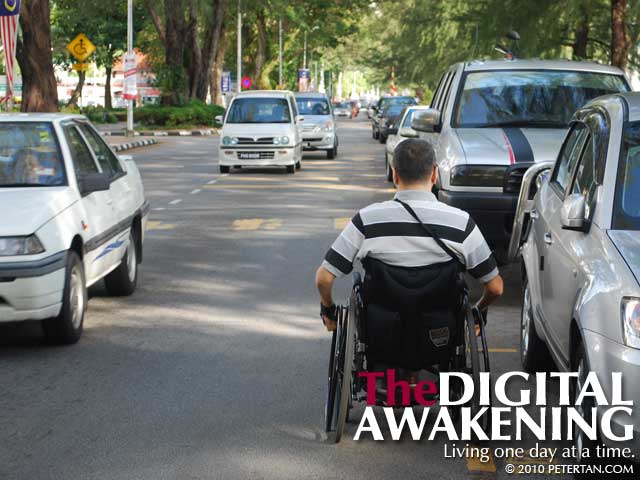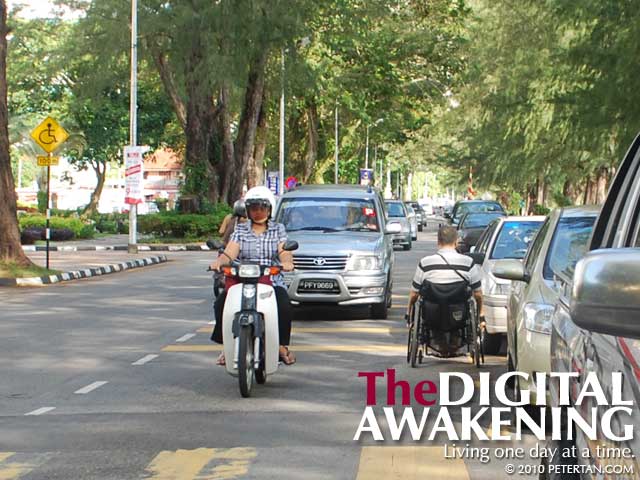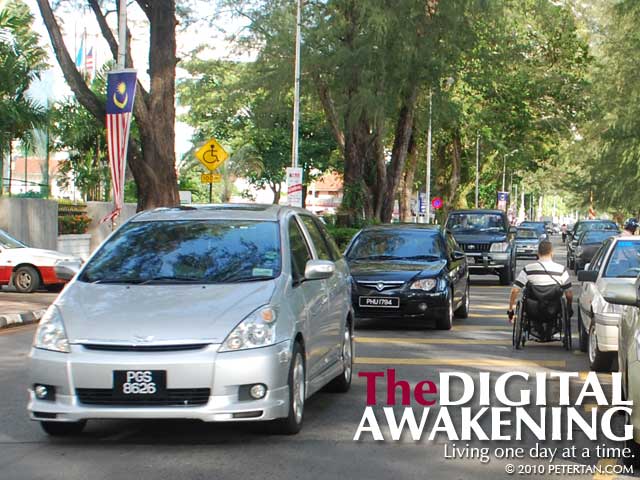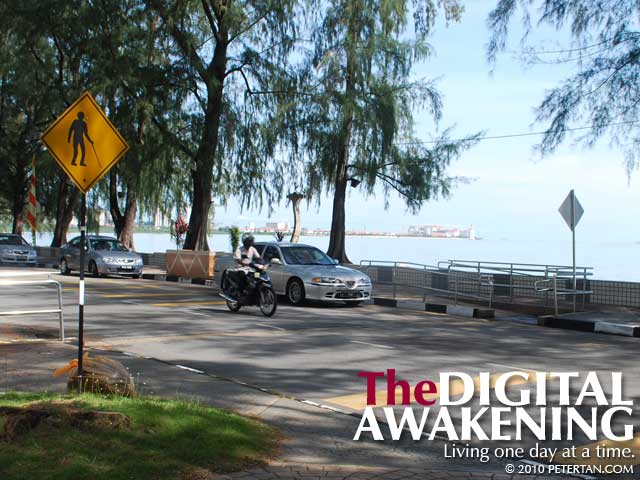The Ministry of Tourism Malaysia spent RM7mil on the expansion of the Penang Botanic Gardens. It was completed last year. Two controversial arches were built at a cost of RM150,000 at the Penang Water Garden located beside the car park and just outside the old garden gates. Those two arches were later demolished following public outroar that they were unsightly and does not blend into the landscape. One of the arches was said to be tilting. The ministry allocated another RM70,000 for the demolition works.
News report mentioned that Penang Water Garden houses a complex of seven ponds, that altogether, cover the size of half a football field. This part of the expansion costs RM1.5mil. The ponds were cultivated with giant Victoria amazonica water lilies, lotuses and water plants. The Penang Water Garden is said to be the largest water garden in Malaysia.
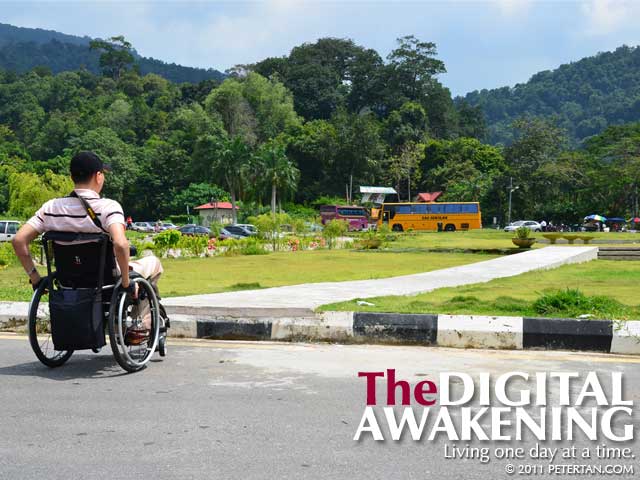
No way for wheelchair user to get up the kerb and to the ramp at Penang Water Garden.
Photo by Wuan.
The Water Garden consists of several levels. There were two gentle ramps connecting the different levels. What exasperated me was that there were no ramps for wheelchair users to go up the kerbs from the road. One would expect that the Ministry of Tourism, Department of Irrigation and Drainage and other agencies responsible for this project would have the mind to include proper accessible facilities for disabled people visiting the gardens.
Unfortunately, RM220,000 was frittered away in building and then demolishing the arches while access needs of disabled visitors were not given due consideration at all. This is most disappointing especially when the Penang Botanic Gardens is popular among Penangites and tourists alike, and also the fact that the Persons with Disabilities Act has been in force since 2008.

